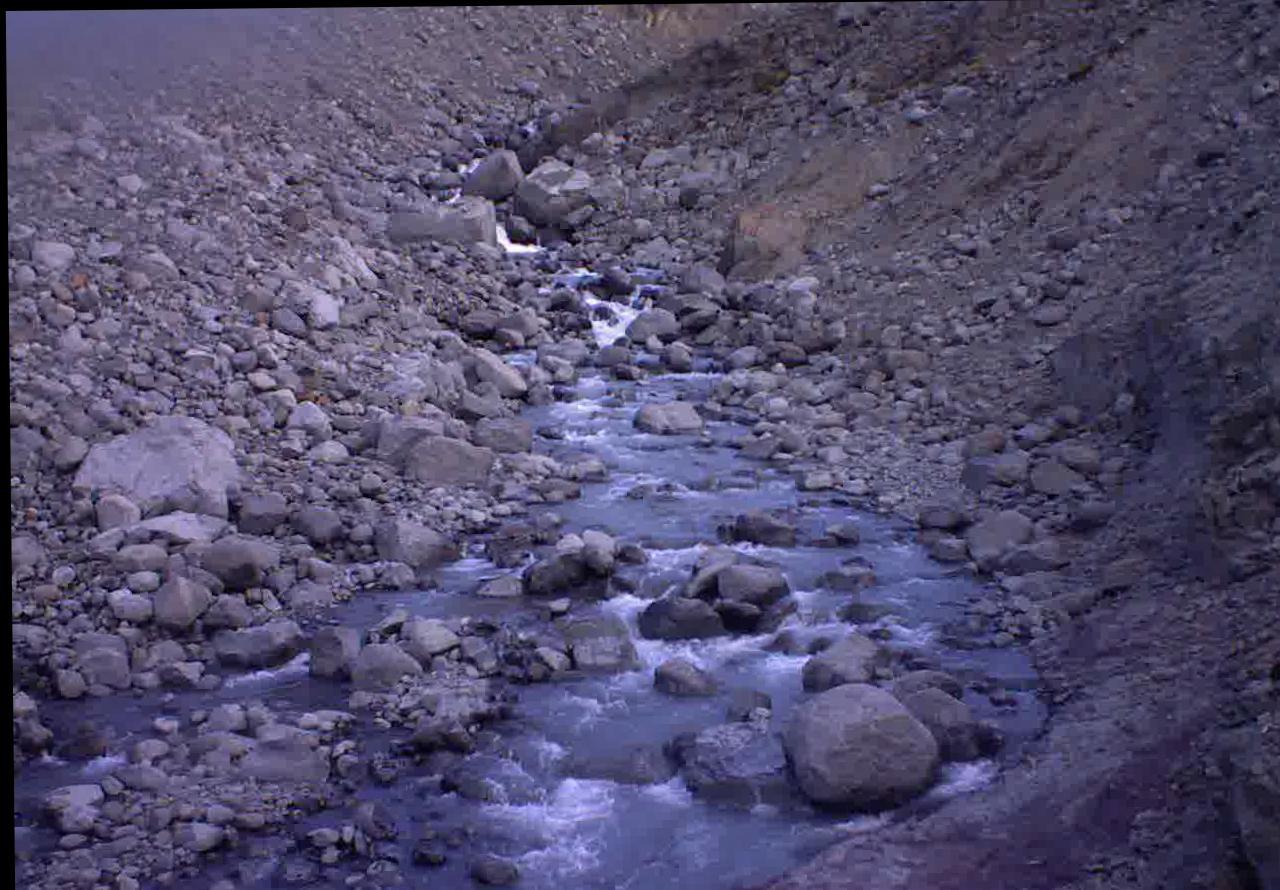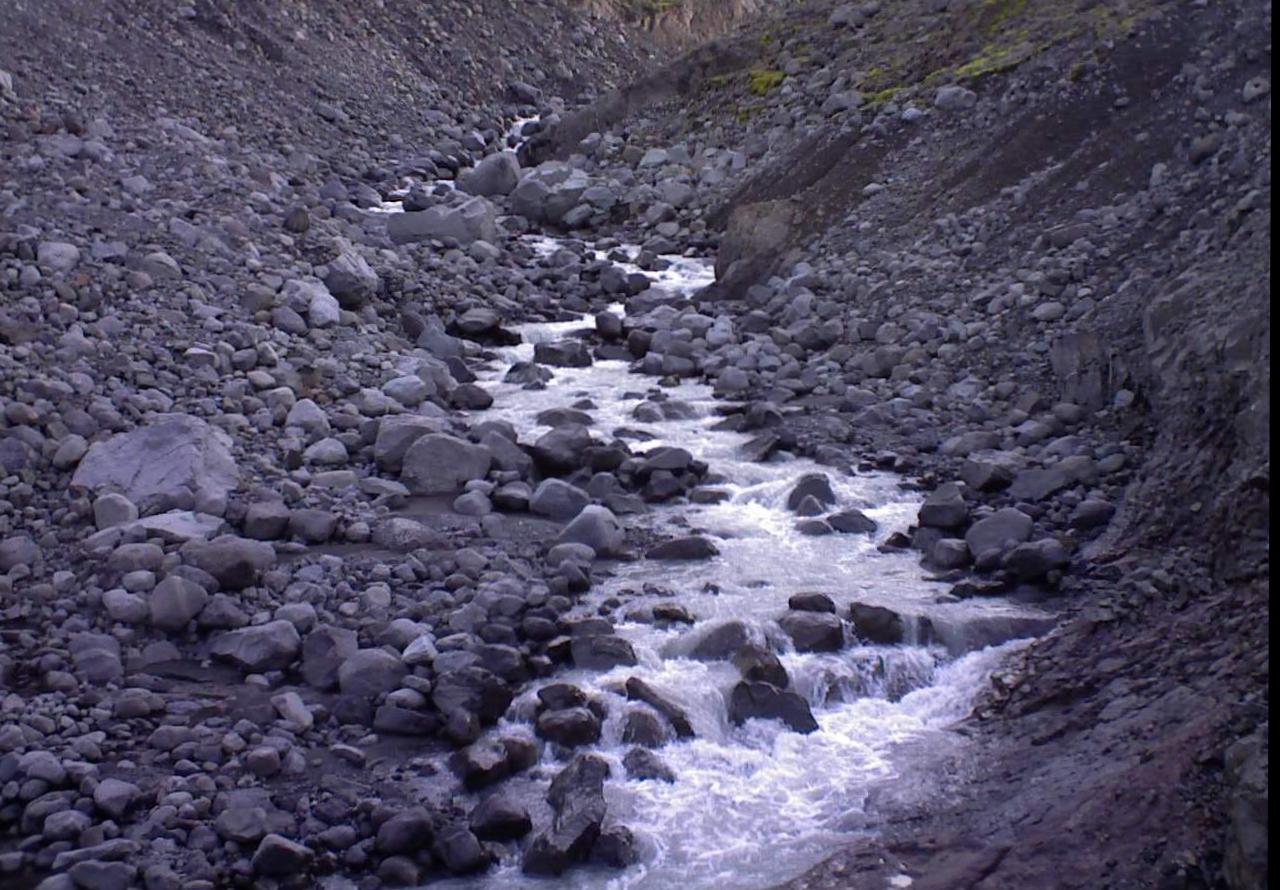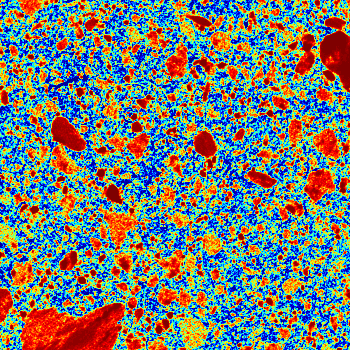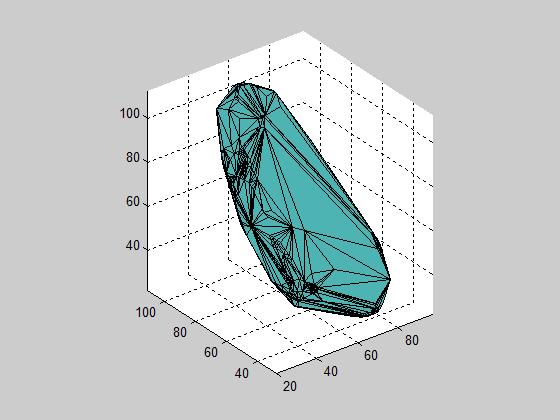We have been analysing the time-lapse image sequences from the river camera. Mostly it recorded at 4-hour intervals, but for a couple of days in September 2012 it took pictures every minute – the sequence is shown here.
At about noon the river rises by a few centimetres. The change is hardly noticeable, but we can measure the level quite accurately with careful image analysis, and we can see it happening by watching the river start flowing over a rock in this video.

The river rises to flow over a rock
We would like to relate this to what is happening up on the glacier. One factor is when the sun falls on the ice, and we can work this out from a map of the terrain. Here we are using a digital elevation model from the ASTER instrument aboard the Terra satellite. (ASTER GDEM is a product of METI and NASA.) The animation shows sunlit areas on the glacier and surrounding mountains increasing as the sun rises on 25 September 2012.
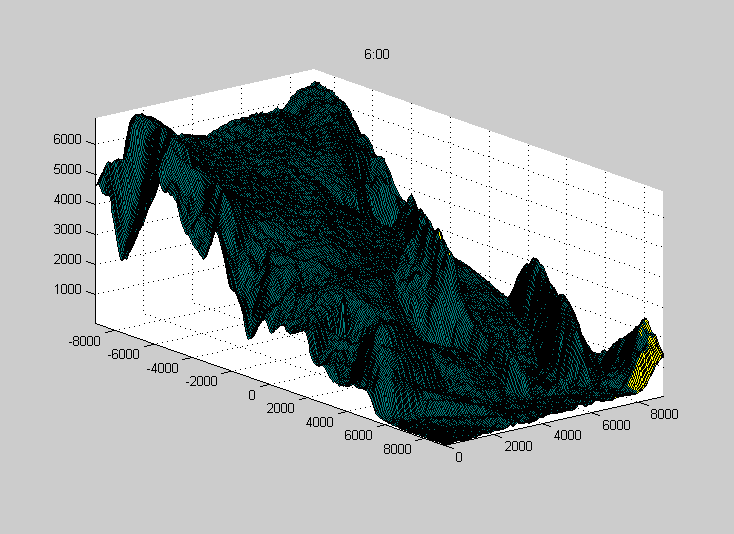
Simulated sunrise, 25 September 2012. Vertical scale exaggerated by factor of 5.

